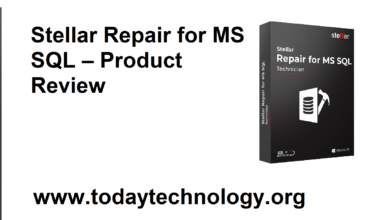
In recent years, the landscape of application development has undergone a transformative shift with the advent of low-code platforms. According to Gartner’s predictions, by 2024, more than 65% of all app development functions will be conducted through low-code application building. Furthermore, approximately 66% of large enterprises are anticipated to utilize a minimum of four low-code platforms.
Low-code application development platforms introduce diverse methods that empower companies or individuals without extensive programming backgrounds to craft custom applications in the cloud.
These platforms offer a visual development environment, leveraging techniques such as drag-and-drop functionality, making the app-building experience seamless and accessible to a broader audience. As organizations embrace this paradigm shift, low-code platforms signify a new era in application development, where innovation is no longer confined to traditional coding practices but extends to a more inclusive and agile approach.
Table of Contents
What is Low Code Application Development?
Low-code development prioritizes speed, ease of use, and visual interfaces over traditional coding methods. It enables developers to construct custom applications using pre-built components and graphic design tools regardless of their coding proficiency.
This approach extends beyond traditional coding, allowing the creation of a diverse range of applications, from web and mobile apps to workflow automation and business process management solutions.
How Does Low-Code Application Development Work?
Low-code application development simplifies traditional software development by minimizing manual coding efforts. It utilizes visual interfaces and pre-built components to enable users, even those with limited coding expertise, to create applications efficiently. Here’s a breakdown of how low-code application development works:
-
Visual Development Environment
Low-code platforms provide a visual development environment where users can design and create applications using graphical elements. This environment typically includes drag-and-drop functionality, allowing users to add components to the application canvas without writing extensive code.
-
Pre-Built Components
Low-code platforms come with a library of pre-built components or widgets representing common functionalities, such as buttons, forms, data grids, etc. Users can select and configure these components according to their requirements, eliminating the need for manual coding.
-
Configuration Through GUI
Instead of writing code manually, users configure the behavior of components through a graphical user interface (GUI). Parameters such as data sources, user interactions, and business logic are set up using visual tools, making the process more accessible.
-
Automated Code Generation
As users design and configure the application visually, the low-code platform automatically generates the underlying code in the background. This code generation is based on the user’s selections and configurations, ensuring the application functions according to the defined logic.
-
Integration with Backend Services
Low-code platforms often facilitate seamless integration with backend services, databases, and external APIs. Users can connect the application to various data sources and services through visual connectors, enabling data exchange without complex coding.
-
Workflow Automation
Many low-code platforms support the creation of workflows and business processes through visual tools. Users can design the flow of activities, specify conditions, and automate processes without manually coding each step.
-
Iterative Development
Low-code development allows for iterative and agile development practices. Users can quickly build a prototype, gather feedback, and make adjustments without extensive redevelopment, speeding up the development lifecycle.
Why Choose Low-Code Application Development?
Low-code application development introduces a revolutionary way to build applications through a drag-and-drop approach. Eliminating the need for extensive coding enables enterprises to develop custom business solutions swiftly using pre-built templates.
-
Flexibility
Low-code development allows for a tailored approach to different workflows and projects, providing flexibility in strategy implementation.
-
Simple & Feature-packed
With an emphasis on simplicity, low-code platforms offer ease of use and robust features that outshine conventional platforms.
-
Reduction of Failure Rate
The flexible nature of low-code development significantly reduces the failure rate associated with large projects, ensuring that defined objectives are met.
-
High-Speed Development Cycle
Low code accelerates the development cycle, transforming months of development time into days.
-
Cost Reduction
By requiring fewer resources and money for development, low-code applications reduce the overall cost of software development.
-
Reduction of Bugs
The streamlined nature of low-code development results in fewer bugs, contributing to smoother and more efficient applications.
-
Interconnection
Low-code platforms facilitate seamless integration with various technologies, including social media, mobile tech, and artificial intelligence.
-
Multiple Deployment
Unlike traditional approaches, low-code allows businesses to simultaneously build and deploy applications for multiple platforms.
Conclusion
As we step into this new era facilitated by low-code platforms, the possibilities for innovation, efficiency, and user-centric development are boundless. It’s a future where creating sophisticated applications is no longer exclusive to coding experts but is open to the creativity and ingenuity of a broader spectrum of individuals, paving the way for a more inclusive and dynamic realm of application development.
Follow TodayTechnology for more!


![Photo of Ftpbd.net_Server [2021]](https://www.todaytechnology.org/wp-content/uploads/2021/09/ftpbd-all-movies-2-220x150.jpg)





